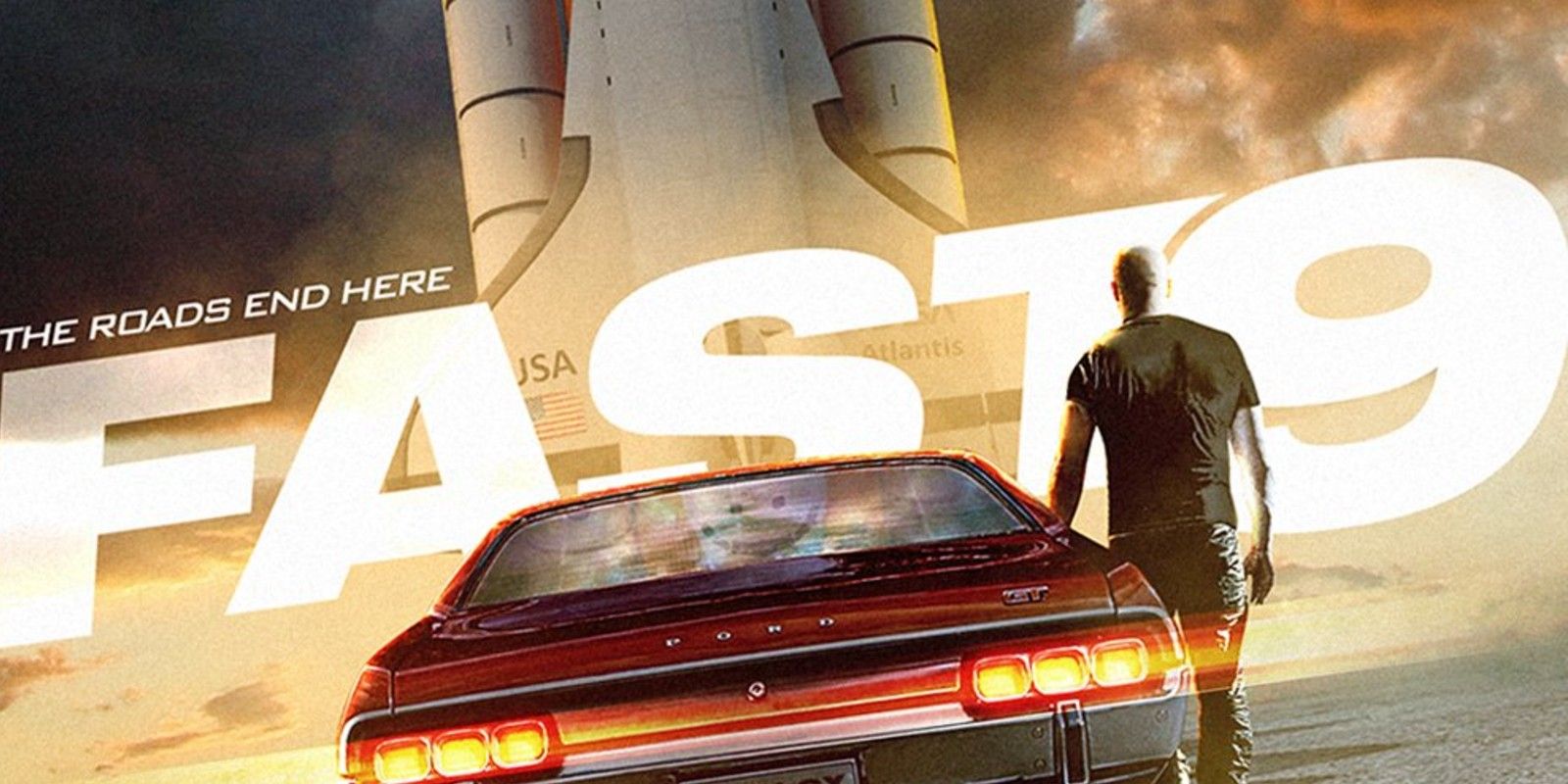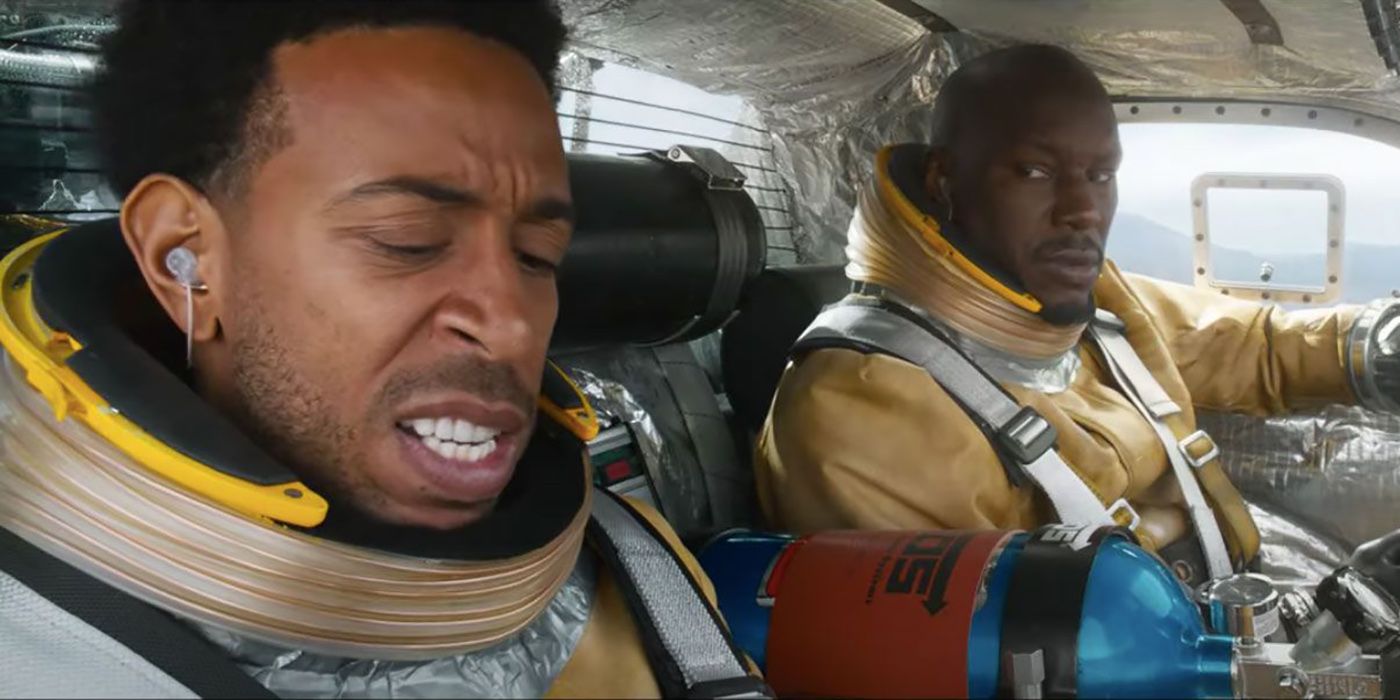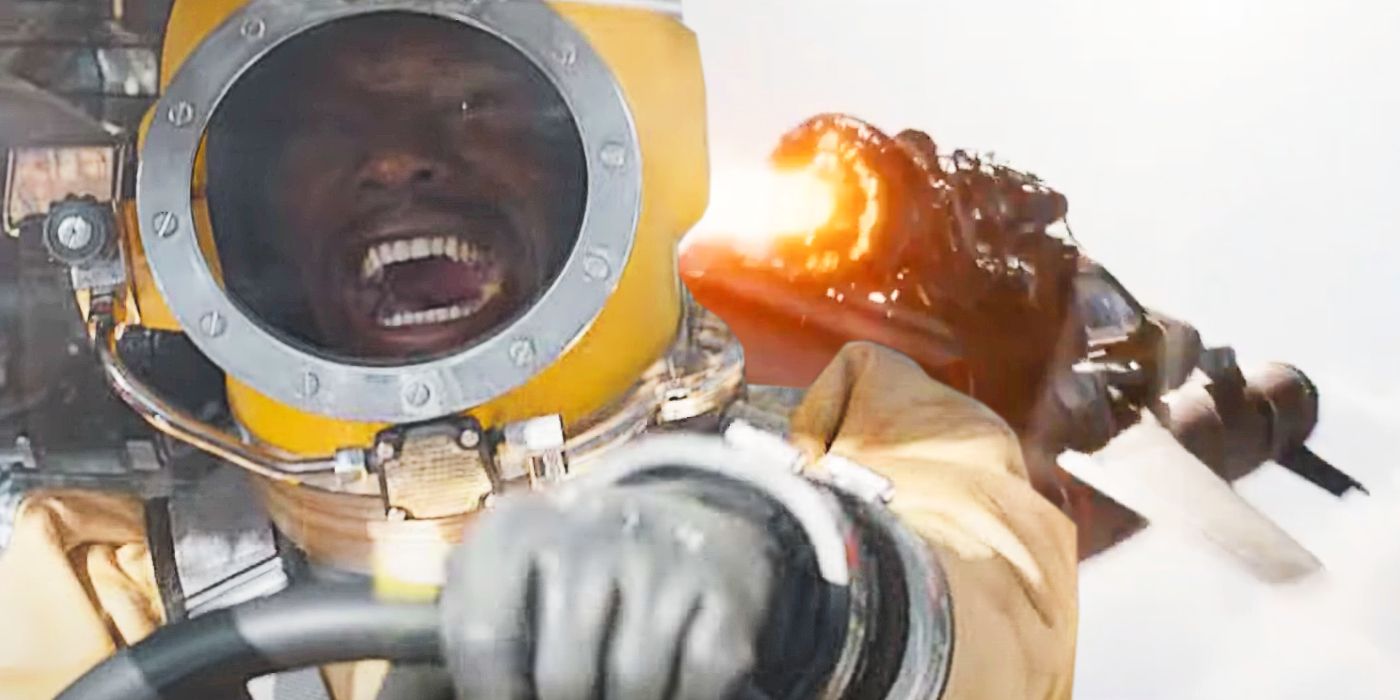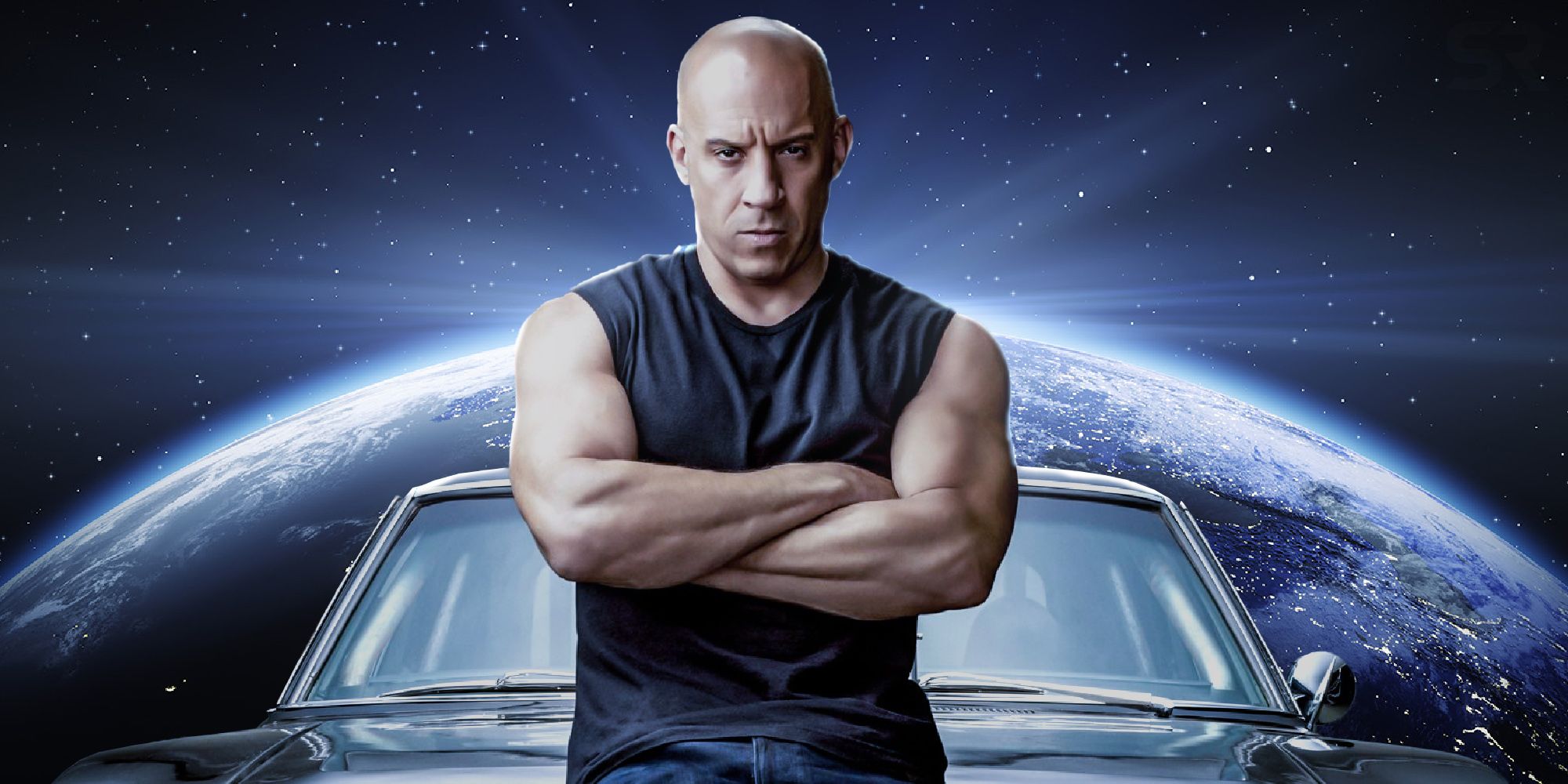
Warning: Spoilers ahead for F9
The newest Fast & Furious movie, F9, takes the series to space, but why does Fast & Furious 9 head to space in a rocket car–and how realistic is it? After a delay of just over a year due to the COVID-19 pandemic, the release brings with it all of the series’ unhinged action and comedic banter. Still, even after an astonishing 20-year run in which the franchise has reached superhero movie levels in both its box office success and the on-screen abilities of its characters, “Fast & Furious in space” is still a surreal sentence to read.
Then again, that’s still only relatively speaking. The Fast & Furious series began as a Point Break-knockoff of street racers stealing DVD players, and by 2015’s Furious 7, Dominic Toretto was effortlessly leaping a car from one skyscraper to another like a level in Super Mario Brothers. At this point, if a Fast & Furious movie isn’t casually breaking one law of physics after another, it just isn’t doing its job.
RELATED: F9 Cast Guide: Every New & Returning Character
Other action movie franchises may look at something like space travel as off-limits if it weren’t already a part of the series from the get-go. For The Fast Saga, the attitude is simply to dive head first into anything it hasn’t tried yet, as the fact that a Fast & Furious franchise crossover with the Jurassic World movies is even being discussed shows. Here’s how F9 goes to space, along with whether or not it’s even theoretically possible.

F9’s MacGuffin is a device codenamed Ares, essentially a souped-up version of God’s Eye from Furious 7 that enables the user to hack into the entire digital network across the world all at once. Once its program has been uploaded into a satellite in Earth’s orbit, whoever controls Ares effectively has power over the entire planet and, most importantly, over its arsenal of weapons. To stop Cipher from wielding the power of Ares, Dom and his crew devise their most literally out-of-this-world plan yet.
That is, of course, the in-story reason for F9’s plot device of space travel. Externally to the story, F9 goes to space because each Fast & Furious movie from Fast Five on is committed to being twice as off-the-chain as the last one. For a franchise that started out about street racing, the Fast & Furious movies going to space was simply the next step in making the ridiculous believable for F9’s 145-minute runtime. As for how the movie makes it to space, of course, it wouldn’t be complete without a four-wheel vehicle.

Everything in Fast & Furious seems to connect back to Tokyo Drift in some way, and in F9’s case, it’s with the return of Sean Boswell, Earl Hu, and Twinkie. Sean shows Tej Parker and Roman Pearce a new car of his own design, outfitted with a rocket booster to push it greater speeds than ever. Though the prototype explodes after the demo Sean gives to Tej and Roman, it proves instrumental when the efforts of Dom’s family to stop Cipher calls upon them to take to the stars.
In order to prevent Cipher’s satellite uplink to Ares, the rocket car is fitted out with some extra rocket boosters, attached to a plane piloted by Sean and Earl, and taken to an altitude of 50,000 feet in order for Tej and Roman to take off into the atmsophere. With some modifications and adjustments to accomodate space travel, the rocket car is effectively outfitted into a true spacecraft at the 11th hour. The question is, just how grounded in scientific accuracy is Tej and Roman’s plan?
RELATED: F9: How Han Really Survived

Director Justin Lin consulted with scientists on the space aspect of F9, with Lin specifically mentioning that he was “learning about fuel and physics” during production. While this doesn’t present a full picture of the research conducted in designing Roman’s and Tej’s space car, it seems the primary concern was getting the part about launching a human-piloted vehicle into space in the range of believability. In that aspect, F9 is probably the closest to reality, with Roman and Tej’s car being fitted with rocket thrusters and affixed to a plane piloted by Sean Boswell and Earl Hu. Once they take off and reach the frontier of space, however, that’s where F9 throws caution to the wind in true Fast & Furious fashion.
Roman Pearce and Tej Parker’s spacesuits are homemade approximations of what astronauts wear to go into space, with scuba helmets in place of more state-of-the-art breathing gear and even Tej admitting that duct tape is one of the key components of their suits. The car itself is also hardly fashioned to be a similar metal grading as a NASA space shuttle. Though Tej hand waves away concerns about pressure differentials and other outer space dangers, he and Roman very likely owe much more to the latter’s theory about Dom’s family being somehow invincible keeping them alive than their last-minute, thrown together two-man space program. The fact that Tej and Roman were able to open the doors of the car, go out in the void of space, board a space station in their crude spacesuits, and make it back to Earth is testimony to Tej’s technical genius within the context of the Fast & Furious series, but more so how the franchise plays by absolutely no rules of physics or science but its own.

Of course, anyone going into the Fast & Furious movies at this stage of the series demanding any deference to scientific accuracy is barking up the wrong tree. The real question for F9 is not and never has been whether the movie accurately depicts space travel, but whether it does it well as a Fast & Furious action sequence. As an escalation of the series’ ever-expanding outlandishness that began with the safe-towing in Fast Five (now an almost tame action scene by the standards of absurdity Fast & Furious 9 embraces), the answer is a bit of a mixed bag. Tej and Roman’s comedic banter has probably finally hit its peak of Roman panicking at what he’s gotten himself into and Tej reassuring him that the situation is under control. It’s also interwoven into the plot as to actually be a crucial component of the larger team effort to stop Cipher’s plan, giving it some real weight in a weightless environment. However, the sequence may have also benefitted from being kept under wraps.
The poster of Dom standing outside of a space shuttle give the marketing hook of “Fast & Furious goes to space,” even if Dom himself isn’t involved in the endeavor. With the series now so reliant on one-upping itself to increasingly wild extremes, that approach probably did a lot to excite audiences ahead of the movie. However, it also may have built expectations that Dom’s entire crew would square off in a final showdown with the villains on a space station rather than Tej and Roman’s two-man mission. In that regard, keeping the space aspect of Fast & Furious 9 under wraps until its release might’ve given the movie a secret weapon to throw at audiences and really left an impression of “where can they possibly go now?” by the end. Still, whatever nitpicks one might have with the role space travel plays in F9, the fact remains that it’s still boldly gone where no Fast & Furious movie has gone before.
When The Fast and the Furious first hit theaters in 2001, integrating space travel into the series would have been the most laughable thing in the world. The fact that it’s actually a significant element of F9 shows that perhaps the franchise’s real achievement lies not in how well it pulls that off, but the fact that it can do so with such casual abandon. Fast & Furious 10 and 11 have their work cut out for them in closing out the series with something more outrageously insane, and frankly, time travel now seems like as good a gamble as any.
NEXT: F9’s End Credits Scene Means Big Things For Fast 10 AND Hobbs & Shaw 2
Read more: screenrant.com
